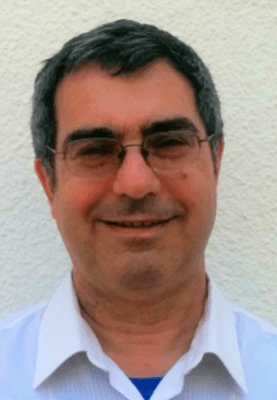Rice-Berry Lectures
Professor David Tannor
October 28, 2024
Two Hundred Years after Hamilton:
Exploring New Formulations of Classical and Quantum Mechanics
Hosts: David Mazziotti and Laura Gagliardi
Time: 3:45 PM | Kent 120
David Tannor is the Hermann Mayer Professorial Chair in the Department of Chemical and Biological Physics at the Weizmann Institute of Science. He received his BA from Columbia University followed by PhD work at UCLA and Los Alamos, and was a postdoc at the University of Chicago. His main fields of interest are quantum mechanics, classical-quantum correspondence, light-matter interactions and the active control of chemical reactions using laser light. He is the author of the text Introduction to Quantum Mechanics: A Time-dependent Perspective.
Past Lectures

December 10, 2019
2019 Rice-Berry Lecture of the CCTCh
Professor John D. Weeks, University of Maryland, College Park
“Solvation, Structure, and Simulations of Systems with Strong Coulomb Interactions: The Long and Short of It”
3:45 PM | GCIS W301/W303
John D. Weeks is a Distinguished University Professor in the Department of Chemistry and the Institute for Physical Science and Technology at the University of Maryland, College Park. He earned his bachelor’s degree from Harvard University (1965) and then completed his PhD at the University of Chicago working with Stuart Rice (1969). John then moved to the University of California, San Diego for a postdoctoral fellowship in the group of Kurt Shuler. There, along with another postdoc in the group, David Chandler, and Hans Andersen (then an assistant professor at Stanford), he put together an elegant, powerful, and definitive framework to understand the structure of strongly interacting uniform simple liquids. This framework—commonly referred to as WCA in honor of Weeks, Chandler, and Andersen—has been used for understanding the properties of many nonpolar molecular liquids. John then moved to AT&T Bell Labs and pioneered work on the statistical mechanics of interfaces. In particular, John and his co-workers developed a statistical mechanics framework to describe a new transition governing the roughness of crystal interface. They showed that this “roughening” transition falls in the same class as the KTHNY transition that governs topological defect formation in two-dimensional solids. In 1990, John moved to the University of Maryland, College Park where he has been ever since. His recent work focuses on the conceptual development of a general theory of nonuniform ionic and dipolar fluids, focusing on hydrophobic and ionic solvation properties in aqueous solutions. John’s work has been recognized by multiple awards and honors, including elections to the National Academy of Sciences and American Academy of Arts and Sciences, as well as the Joel Henry Hildebrand Award from the American Chemical Society.

December 10, 2019
Inaugural Rice-Berry Lecture of the CCTCh
Professor Bruce J. Berne, Columbia University
